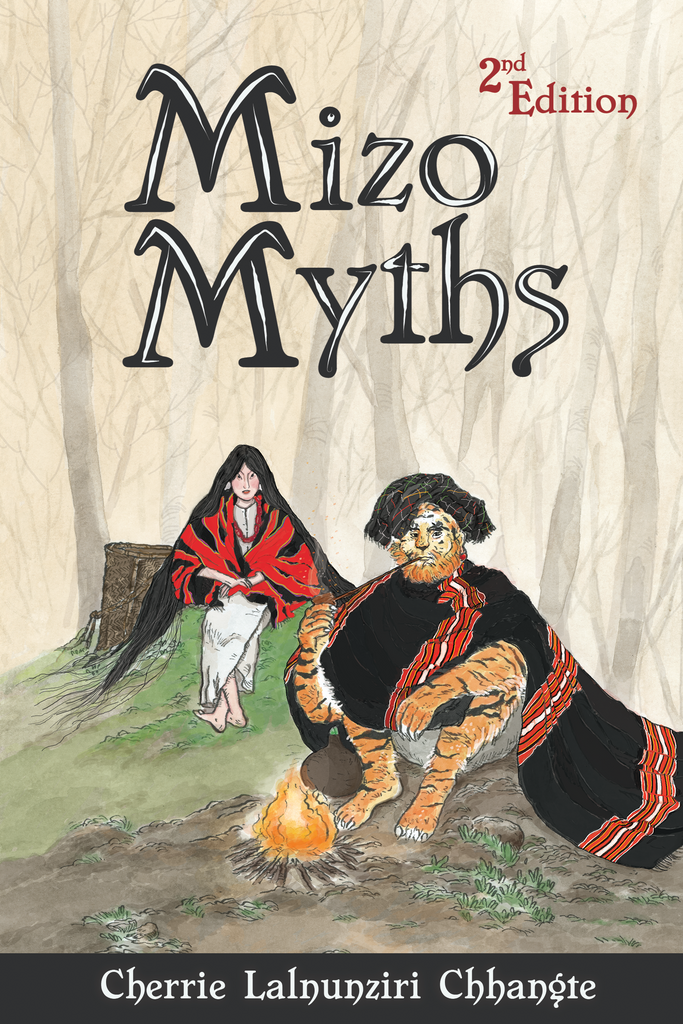
Mizo Myths (2nd Edition) Now Available for Pre-Order!
by Rakesh
We're bringing out a new, expanded edition of Dr. Cherrie Lalnunziri Chhangte's Mizo Myths next month! You can pre-order now for 25% off!!
The new edition contains 9 new stories, for a total of 15. It's got a fabulous new cover illustration by New York-based Mizo artist Alyssa Pachuau, who has been doing amazing work bringing alive the various mythological creatures of her homeland in brilliant colour.
We went back and forth with Cherrie a bit about whether "Myths" or "Folktales" was a better descriptor for these stories: in truth, there are a few of each, and some that straddle those categories. There's a creation myth here, as well as the story of a legendary journey to the Land of the Dead, where caterpillars appear as fearsome bears and dried leaves as edible fish. There are pourquoi stories about how hens got bent knees, and why the slow loris never looks up at the sky.
Cherrie's favourite tales are the ones that involve couplings between humans and supernatural beings. Some of these relationships are consensual, others not so much. There are male weretigers (Keimi) with human wives, and female weretigers (Keimingi) with human husbands. There are the Lasi, hidden folk who appear in dreams and grant their favoured humans magical prowess as hunters. There are the underground-dwelling nature guardians called the Khuavang. There is the ugly, pointy-fingered, goopy-eyed Phungpuinu, who gobbles up beautiful brides (and poops them out) before stealing their bridegrooms. And there is the winged Sichangneii, captured by a lustful man who clips her wings and hides them in a bamboo container above his fireplace.
Many motifs will be familiar to readers of the Brothers Grimm or British folktales, but they occur in strange permutations, often infused with a uniquely Mizo absurdism. Not all these stories are small-child-friendly: violence erupts abruptly and bizarrely. A bird-beaked witch cracks open her victim's skull and eats her brain; a husband, despondent at losing his wife, commits suicide by smashing his own testicles with mallet.
(I really hope that someday, some scholar with a good understanding of the Arne-Thomson-Uther Index--a catalog of folklore motifs and story templates in European and Middle Eastern lore--will work on mapping the stories of this region. As far as I can tell, it's never been done. How is that we find such strong parallels to Little Red Riding Hood and the selkie stories of the Orkney Isles in the Eastern Himalayan foothills? Are these modern stories the descendents of folk stories so old that they predate the split between Indo-European and Sino-Tibetan languages? Or are human minds just built similarly enough that different peoples have independently invented similar fictional characters several times?)
For a tiny little state that's been almost completely Christianized, the tribes of Mizoram have held on to their ancient folklore with a fierce pride. Cherrie Chhangte has done a phenomenal job of rendering these tales in English, and we're really proud to publish them in this new, expanded, updated edition.
Pre-order your copy now, print or ebook!
